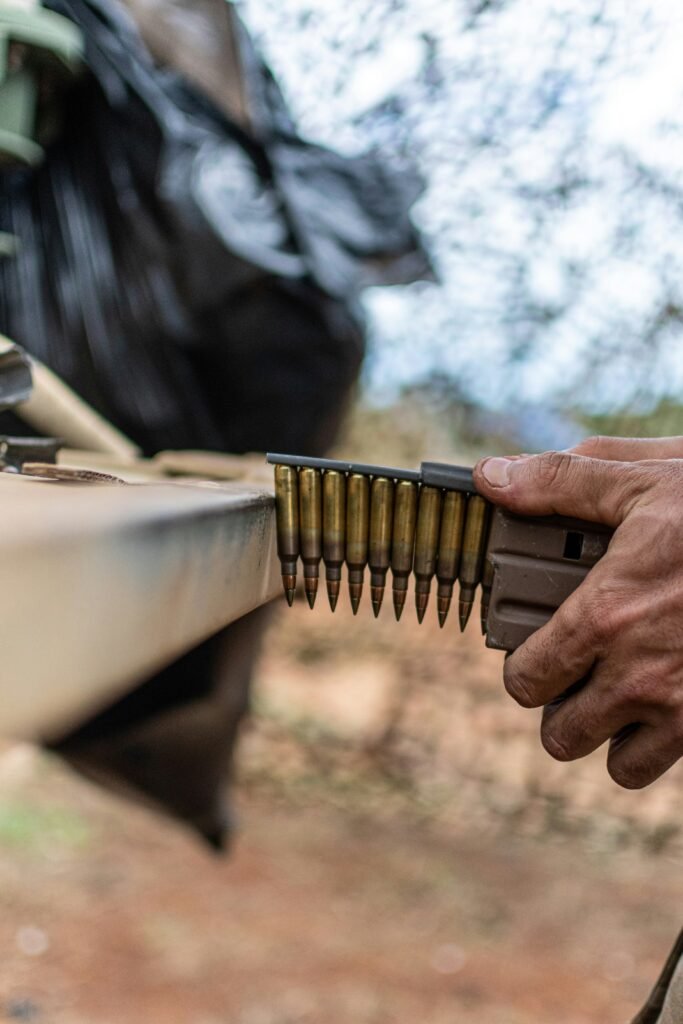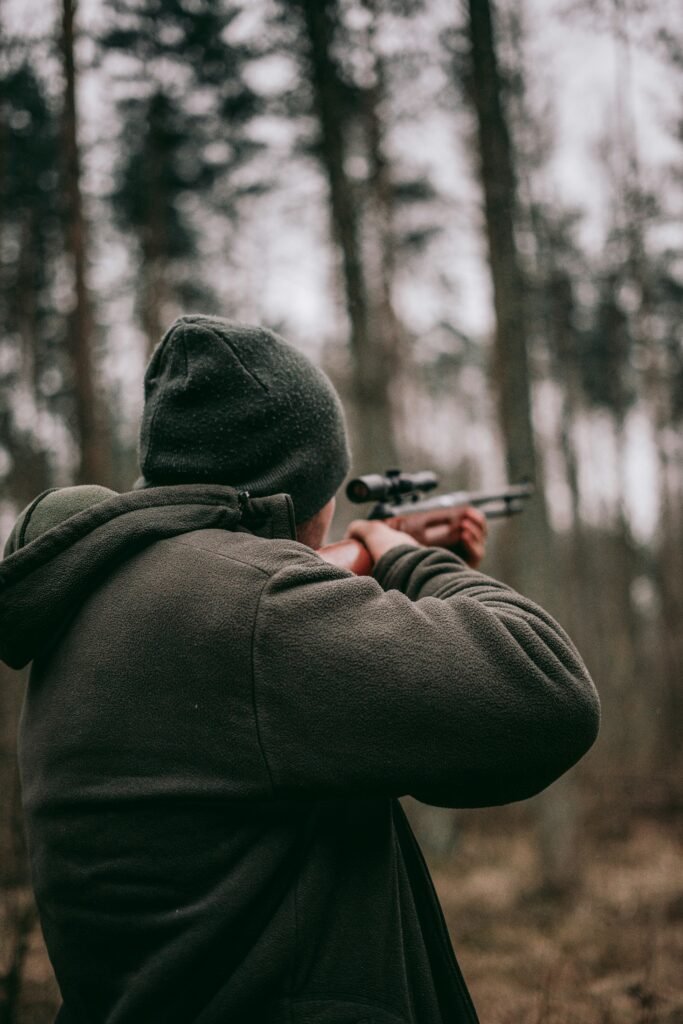Maintaining the functionality and reliability of your gun safe is crucial to ensure the safety of your firearms and valuables. In this article, you will discover practical tips on how to implement a regular maintenance schedule for your gun safe. By following these simple steps, you can prolong the lifespan of your safe and have peace of mind knowing that your firearms are secure and accessible when you need them. So, let’s delve into the world of gun safe maintenance and discover how you can take proper care of your valuable possessions.

This image is property of images.unsplash.com.
Importance of Regular Maintenance
Ensures the Safe’s Proper Functioning
Regular maintenance is vital to ensure the safe’s proper functioning. Gun safes are designed to protect valuable firearms and other important possessions, but without regular maintenance, their performance can be compromised. By implementing a regular maintenance schedule, you can identify and address any issues before they escalate, ensuring that your safe will continue to provide optimal security.
Prevents Malfunctions and Accidents
The last thing you want is for your gun safe to malfunction when you need it the most. Regular maintenance plays a crucial role in preventing malfunctions and accidents. By regularly inspecting and maintaining your safe, you can identify any potential problems with the lock mechanism, bolts, or hinges. Addressing these issues promptly will reduce the risk of unexpected failures and keep your firearms and other valuables secure.
Extends the Lifespan of the Safe
Just like any other mechanical device, gun safes also have a finite lifespan. However, with regular maintenance, you can significantly extend the lifespan of your safe. By inspecting, cleaning, and lubricating the various components, you can prevent premature wear and tear. A well-maintained safe will serve you for many years, providing peace of mind and protecting your valuable possessions.
Establishing a Maintenance Schedule
Consider Manufacturer Recommendations
When establishing a maintenance schedule for your gun safe, it is essential to consider the manufacturer’s recommendations. Each safe may have specific maintenance requirements and intervals specified by the manufacturer. These recommendations are based on the design, materials, and functionality of the safe, and following them will ensure that you maintain your safe in the best possible way.
Frequency of Maintenance
The frequency of maintenance will depend on various factors, including the usage and environment in which the safe is placed. However, a general rule of thumb is to perform regular maintenance at least once every six months. This will allow you to identify any issues early on and prevent them from escalating. However, if your safe is subject to heavy use or located in a harsh environment, more frequent maintenance may be necessary.
Record-Keeping
Maintaining a record of your gun safe maintenance is essential for tracking the history of your safe and ensuring that all required maintenance tasks are completed. Create a simple logbook where you can record the dates of each maintenance session, the tasks performed, and any observations or issues encountered. This record will not only help you stay on track with your maintenance schedule but also serve as a valuable reference for future servicing and repairs.

This image is property of images.unsplash.com.
Inspecting the Exterior
Checking for Physical Damage or Wear
Begin your maintenance routine by inspecting the exterior of your gun safe for any physical damage or signs of wear. Look for dents, scratches, or any other damage that may compromise the integrity of the safe. It’s also essential to examine the door and hinges for any misalignment or looseness. Identifying and addressing these issues early on will prevent further damage and ensure proper functioning.
Cleaning the Exterior Surface
Keeping the exterior surface of your gun safe clean is not only aesthetically pleasing but also crucial for its maintenance. Regularly wipe down the exterior with a soft cloth or sponge, using mild soap and water if necessary. Avoid using abrasive cleaners or solvents, as they may damage the finish or protective coatings of the safe. Remember to dry the surface thoroughly to prevent any moisture buildup.
Addressing Surface Rust or Corrosion
If you notice any signs of surface rust or corrosion on your gun safe, it is imperative to address them promptly. Use a rust-removal solution and a soft brush to gently remove the rust or corrosion. Once the affected area is clean, apply a protective coating or touch-up paint to prevent further rusting. Regularly inspecting and addressing surface rust or corrosion will help preserve the lifespan of your gun safe.
Checking the Lock and Mechanism
Testing the Lock Functionality
The lock of your gun safe is its primary line of defense, and therefore, its functionality should be regularly tested. With the safe door open, test the lock for smooth operation, ensuring that the bolt fully extends and retracts without any hesitation or resistance. If you notice any issues, such as the lock sticking or not fully engaging, it may be time to seek professional assistance to rectify the problem.
Lubricating the Lock and Bolts
Proper lubrication of the lock and bolts is essential to maintain their smooth operation. Use a quality lock lubricant, applying it sparingly to the key opening and any moving parts. Avoid using excessive lubrication, as it may attract dirt and debris, compromising the lock’s performance. Regularly lubricating the lock and bolts will minimize friction and ensure proper functioning.
Replacing Batteries in Electronic Locks
If your gun safe is equipped with an electronic lock, it is important to regularly check and replace the batteries. Low batteries can cause the lock to malfunction, potentially leading to lockouts or other security issues. Refer to the manufacturer’s instructions for the recommended battery replacement schedule and always use fresh, high-quality batteries to ensure reliable operation.

This image is property of images.unsplash.com.
Interior Inspection and Cleaning
Examining the Interior for Damage or Moisture
While the exterior of your gun safe is vital, the interior is equally important. Inspect the interior regularly for any signs of damage, such as bent shelving or broken racks. Additionally, check for any presence of moisture, as excessive moisture can lead to rust or damage to the stored firearms. If you find any issues, address them promptly to maintain the safe’s integrity.
Removing Dust and Debris
Dust and debris can accumulate inside your gun safe over time, which can affect both the appearance and functionality of the safe. Regularly remove dust and debris by using a soft brush or vacuum cleaner with a brush attachment. Be gentle to avoid scratching or damaging the interior surfaces. Keeping the interior clean will prevent any foreign particles from interfering with the safe’s mechanisms.
Using Non-abrasive Cleaning Agents
When cleaning the interior surfaces of your gun safe, it is crucial to use non-abrasive cleaning agents. Harsh chemicals or abrasive cleaners can damage the interior lining or coatings. Use a mild cleaning solution or a mixture of water and vinegar to gently wipe down the surfaces. Avoid using any cleaning agents that contain bleach, ammonia, or other harsh chemicals.
Maintaining Fire Protection
Verifying Fire Rating and Certification
One of the significant benefits of a gun safe is its ability to provide fire protection for your valuable possessions. Regularly verify the fire rating and certification of your safe to ensure its reliability. Check if the safe meets the industry standards for fire resistance and if the certification is still valid. If there are any concerns or uncertainties, consult with a professional safe technician for further guidance.
Checking Fire Gaskets and Seals
To ensure the effective fire protection of your gun safe, inspect the fire gaskets and seals regularly. These components create a barrier against smoke and heat during a fire. Check for any signs of wear, tearing, or degrading in the gaskets and seals. If any issues are detected, replace the damaged components promptly to preserve the safe’s fire resistance capabilities.
Replacing Damaged Sealant
The sealant around the door frame plays a crucial role in maintaining the fire protection of your gun safe. Over time, the sealant may wear out or become damaged, compromising its effectiveness. Inspect the sealant regularly, looking for any cracks, gaps, or deterioration. If you notice any issues, carefully remove the damaged sealant and replace it with a fresh sealant recommended by the manufacturer.
Maintaining Safe Climate
Monitoring Humidity Levels
Controlling the humidity levels inside your gun safe is essential to prevent rust and corrosion. Regularly monitor the humidity levels using a hygrometer placed inside the safe. Ideally, the humidity should be maintained between 40% and 50% for optimal firearm and safe preservation. If the humidity exceeds these levels, take appropriate measures to reduce it, such as using desiccants or dehumidifiers.
Using Desiccants or Dehumidifiers
To maintain a safe climate, you can utilize desiccants or dehumidifiers inside your gun safe. Desiccant packs or dehumidifier rods help absorb excess moisture, keeping the humidity within the desired range. Place desiccant packs strategically inside the safe, ensuring that they are not in direct contact with the firearms or other valuables. Alternatively, install a dehumidifier rod, which actively removes moisture from the air.
Addressing Condensation Issues
In certain climates or environments, condensation can pose a challenge to maintaining a safe climate inside your gun safe. Condensation occurs when warm air comes into contact with cold surfaces, causing moisture to accumulate. To address condensation issues, consider using moisture-absorbing materials, such as silica gel packs, silica canisters, or even rice. These materials help absorb moisture and reduce the risk of condensation.
Keeping the Bolts and Hinges in Good Condition
Inspecting Bolt Alignment and Functionality
The bolts and hinges of your gun safe play a crucial role in its security. Regularly inspect the bolt alignment and functionality to ensure they are functioning properly. Check if the bolts extend and retract smoothly, without any resistance or misalignment. If you notice any issues, such as loose or misaligned bolts, consult a professional safe technician to address the problem promptly.
Lubricating Bolts and Hinges Regularly
To maintain the smooth operation of the bolts and hinges, regular lubrication is necessary. Use a high-quality lubricant specifically designed for safe mechanisms and apply it sparingly to the moving parts. This will reduce friction and wear, ensuring that the bolts and hinges function smoothly and securely. Remember to wipe away any excess lubricant to prevent it from attracting dirt or debris.
Adjusting or Replacing Loose Bolts
Over time, the bolts in your gun safe may become loose due to repeated use or environmental factors. Loose bolts compromise the security and integrity of the safe. Regularly check for any signs of loose bolts and, if detected, promptly tighten them using the appropriate tools. If tightening the bolts does not resolve the issue, it may be necessary to replace them with new ones to maintain the safe’s security.
Regularly Testing the Safe
Testing Lock and Bolt Operation
Regularly testing the lock and bolt operation is essential to ensure the continued security of your gun safe. Close and lock the safe, then test the lock and bolts to ensure their proper engagement. Verify that the lock is holding securely and that the bolts extend fully into the locking mechanism. If you encounter any difficulties or notice any abnormalities during the testing, contact a professional safe technician.
Checking Alarm and Monitoring Systems
If your gun safe is equipped with an alarm or monitoring system, it is crucial to regularly check its functionality. Test the alarm and monitoring systems according to the manufacturer’s instructions. This will ensure that the systems are functioning correctly and will alert you in case of unauthorized access or tampering.
Performing Fire and Water Resistance Tests
To maintain confidence in your gun safe’s ability to withstand fire and water damage, periodic fire and water resistance tests are recommended. Follow the manufacturer’s guidelines on how to conduct these tests safely and effectively. These tests will verify that your safe continues to provide the necessary protection and that no vulnerabilities have developed over time.
Professional Servicing and Repairs
Knowing When to Seek Professional Help
While regular maintenance tasks can be performed by most safe owners, there are times when professional assistance is necessary. If you encounter any complex issues or problems beyond your expertise, it is crucial to seek professional help. Examples include significant lock malfunctions, severe damage to the safe, or when the safe no longer meets industry standards for safety and security.
Choosing a Trusted Safe Technician
When selecting a safe technician for professional servicing and repairs, it is essential to choose a trusted and reputable provider. Look for technicians who are experienced in working with gun safes and have certifications or professional affiliations in the industry. Reading reviews and seeking recommendations from trusted sources can also help you find a reliable safe technician.
Scheduling Regular Servicing and Repairs
In addition to your own regular maintenance efforts, scheduling regular servicing and repairs with a professional is highly recommended. A professional safe technician will have specialized knowledge and equipment to perform in-depth inspections, repairs, and necessary adjustments to keep your gun safe in optimal condition. Establish a schedule with your chosen safe technician to ensure ongoing maintenance and address any potential issues promptly.
In conclusion, implementing a regular maintenance schedule for your gun safe is crucial to ensure its proper functioning, prevent malfunctions and accidents, and extend its lifespan. By following manufacturer recommendations, regularly inspecting and cleaning the exterior and interior, maintaining fire protection and safe climate, and keeping bolts and hinges in good condition, you can enjoy the peace of mind that comes with owning a secure gun safe. Remember to regularly test the safe, know when to seek professional help, and schedule regular servicing and repairs to maintain your gun safe’s optimal performance. Taking the time to care for your gun safe will ensure that it continues to protect your firearms and other valuable possessions for many years to come.
